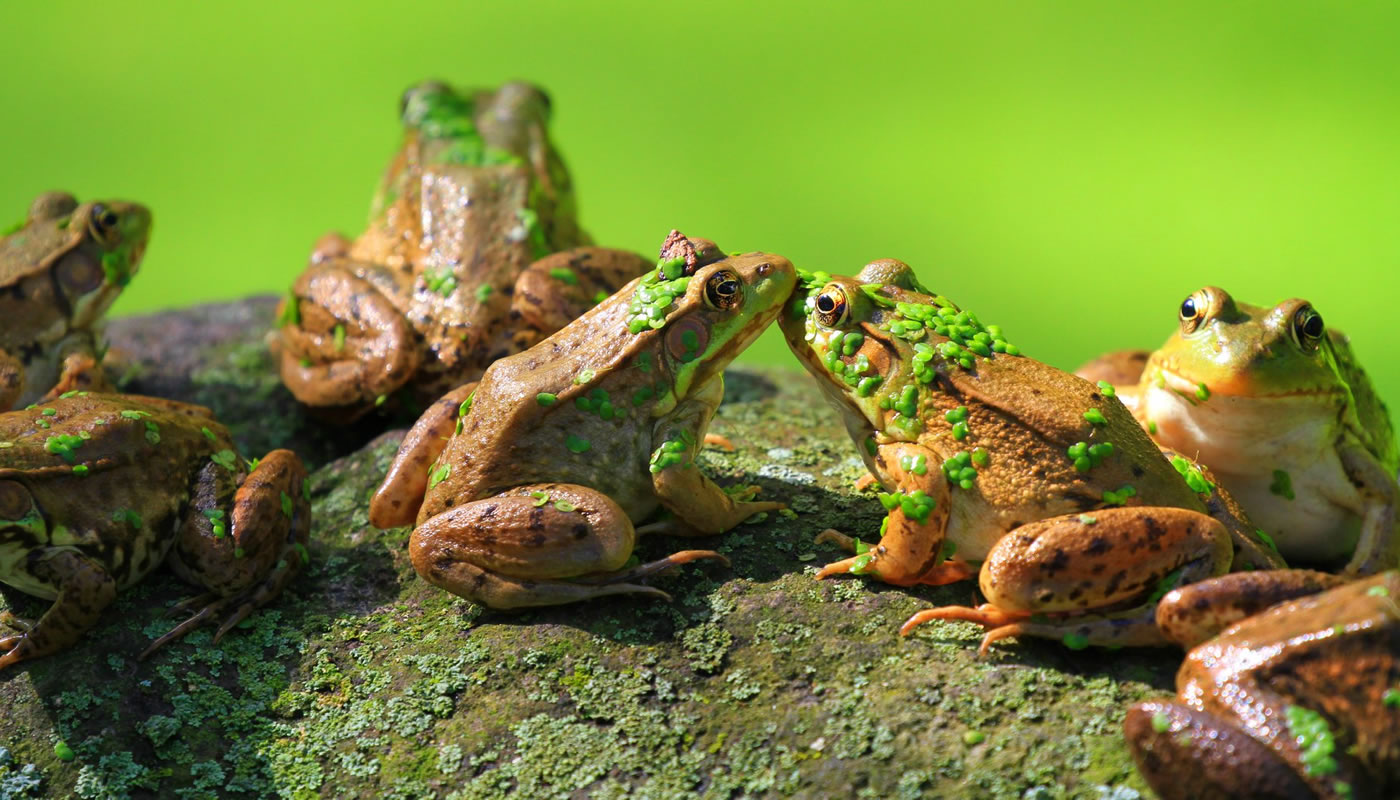As spring begins and ponds come alive, the Forest Preserves of Cook County transforms into an energetic amphitheater of frog calls. These springtime serenades are a sign of the changing seasons—when our frogs first thaw from their winter torpor and begin calling loudly to attract a mate. Here’s a guide to the voices you might hear in the preserves and how to mimic their calls at home.
Boreal Chorus Frog (Pseudacris maculata)
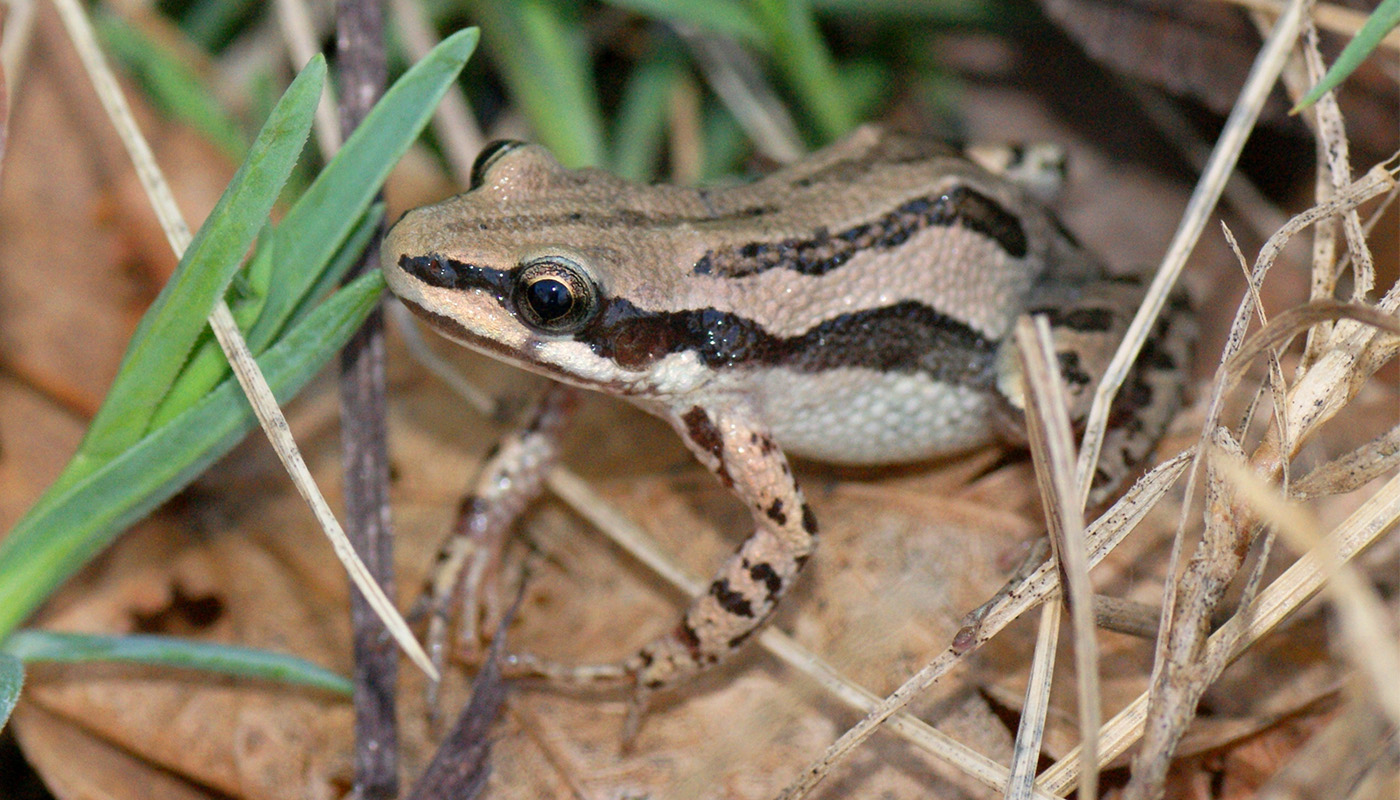
If you’ve walked past a shallow pond or wetland between March and May, you’ve probably heard the boreal chorus frog. One of the earliest callers makes itself heard with its rhythmic trill, often described as the sound of a fingernail running over the teeth of a plastic comb.
Spring Peeper (Pseudacris crucifer)
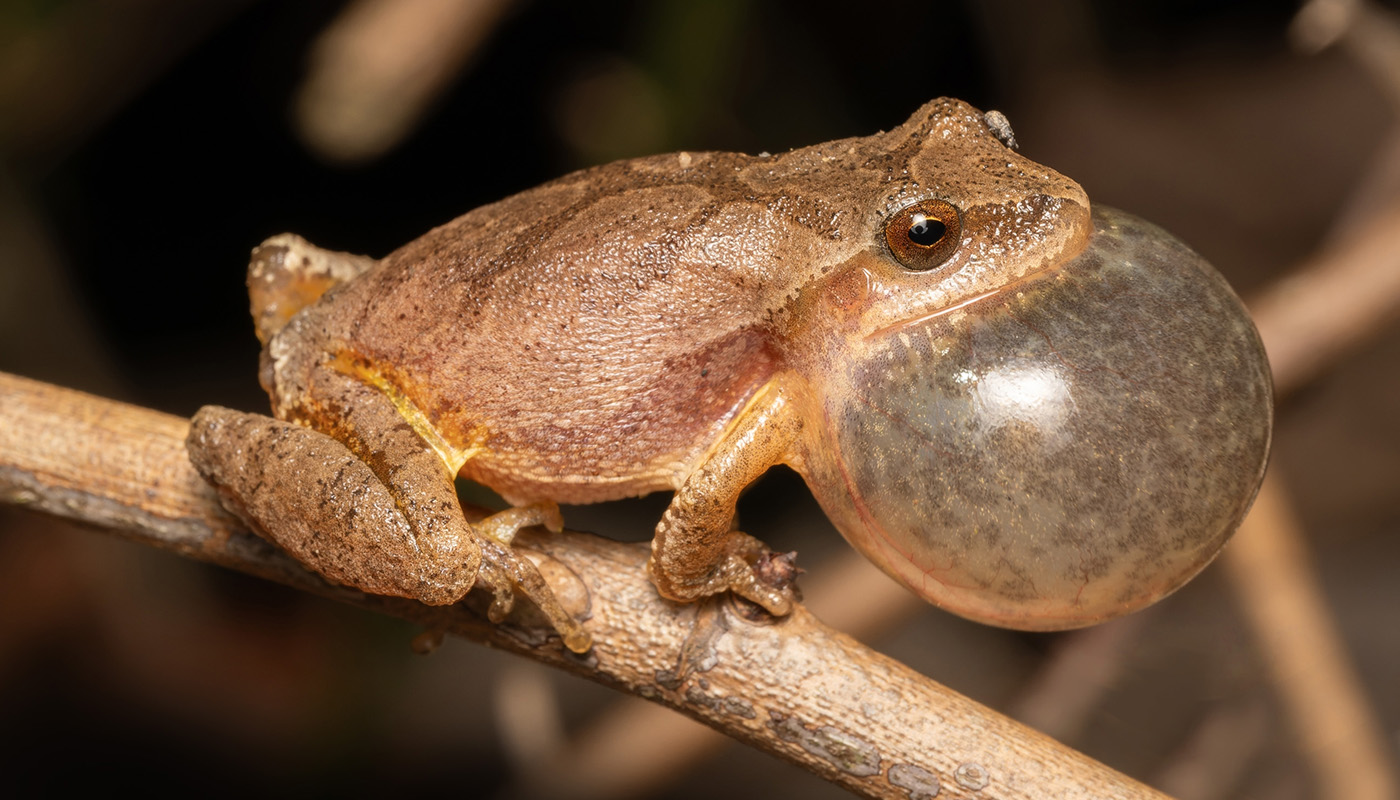
Like the chorus frog, the spring peeper’s mating season starts in early March and runs through early June. It adds its high-pitched “peep” to the chorus of spring calls, sounding like a quick whistle or a scene straight out of a 50s sci-fi movie.
Bullfrog (Rana catesbeiana or Lithobates catesbianus)
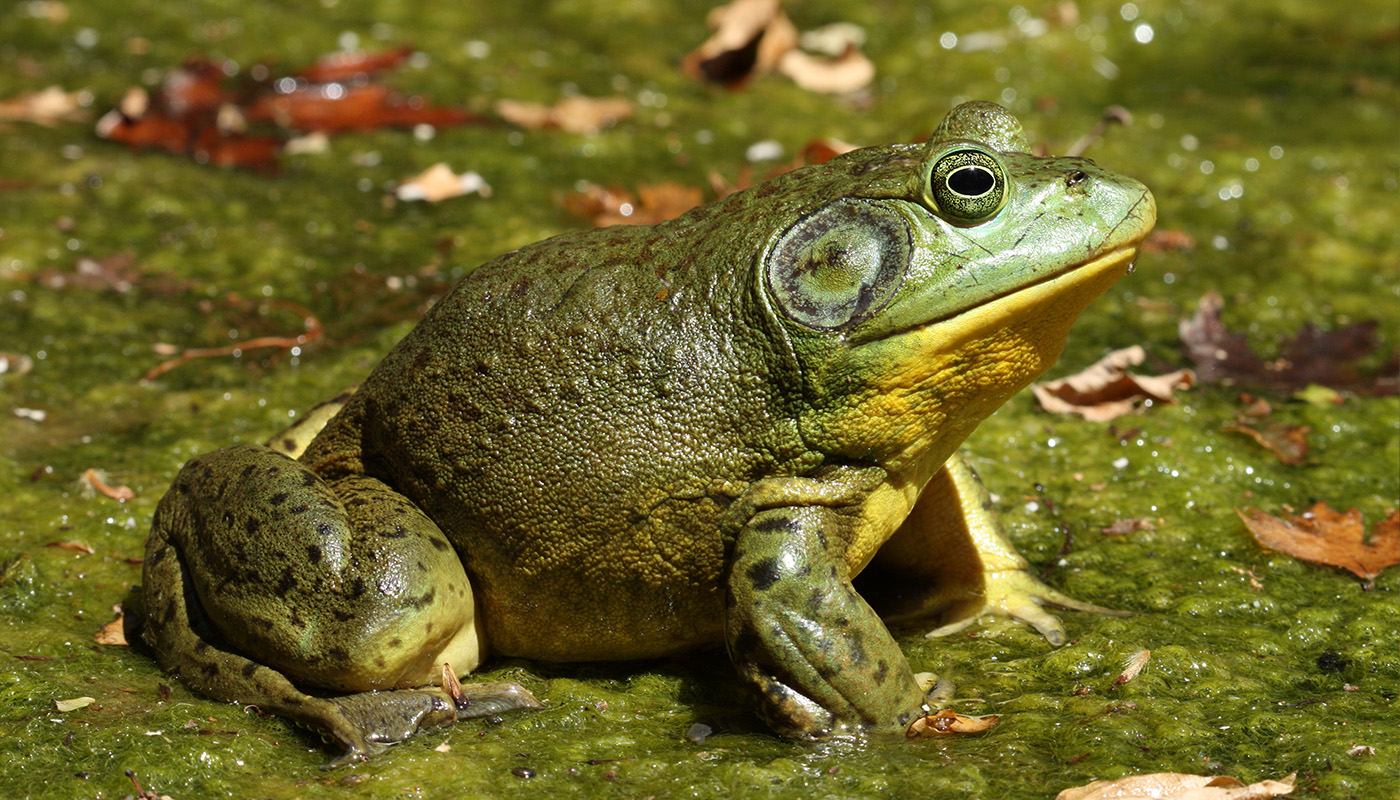
The bullfrog is the largest frog in Cook County, reaching eight inches in length. Its mating season is late April through August, and its call has been described as a deep bass brum or jug-o-rum. The bullfrog’s mating call closely resembles a bull bellowing and can be heard up to a quarter of a mile away.
Green Frog (R. or L. clamitans)
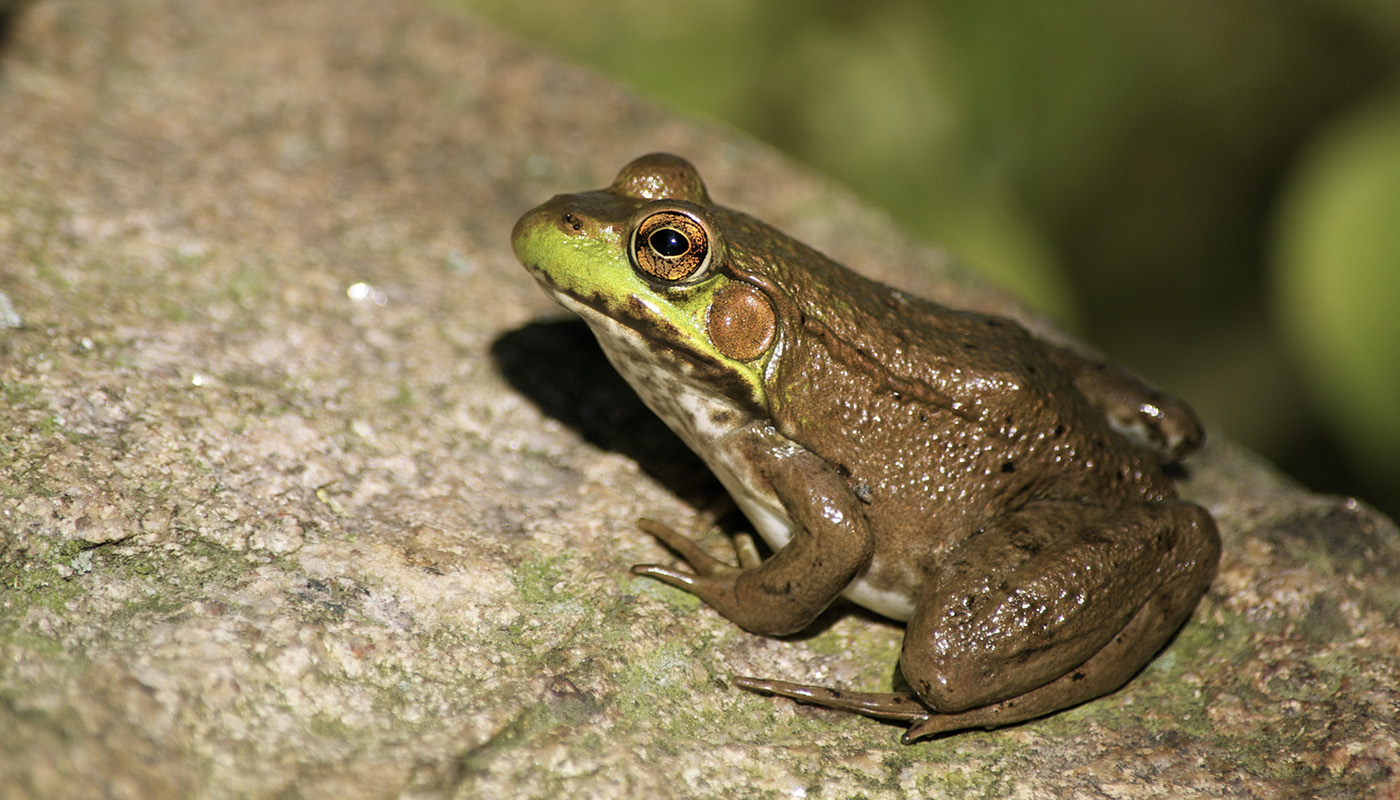
The green frog spends most of its time on the shoreline of lakes, ponds and streams and it breeds from late spring through the summer. Its call is a short buzz that sounds like a loose banjo string being plucked.
Northern Leopard Frog (R. or L. pipiens)
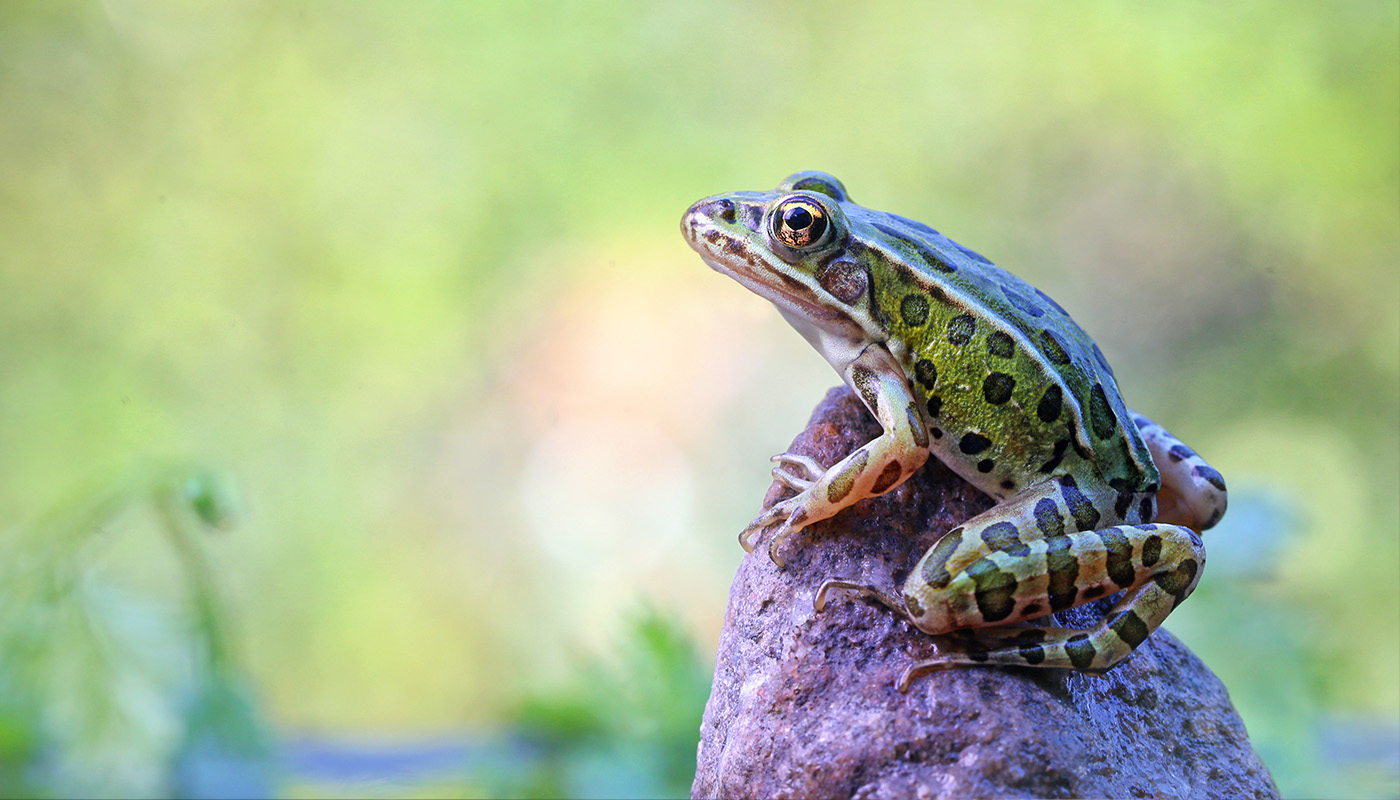
The northern leopard frog looks like the pickerel frog, but its blotches are round, rather than rectangular. It breeds from mid-March to May with its distinctive, deep and resonant snore occasionally punctuated by clucking. The northern leopard frog’s call compares to the sound when you rub your thumb across the surface of an inflated balloon.

